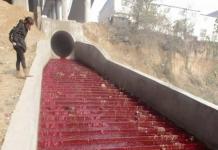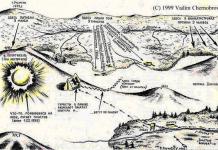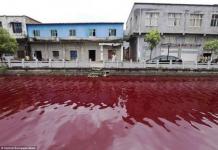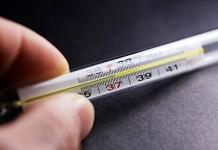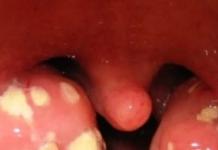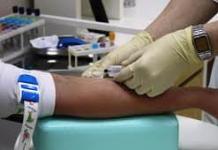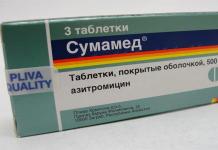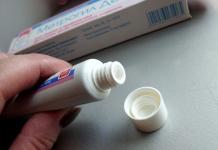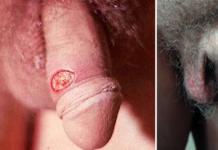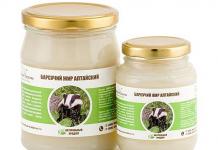Thank you for the provided paint for the review of the store http://www.duracoat.ru/
The native coating on the mossberg is not very resistant: it peels off, the iron is covered with rust even through it. I decided that repainting was the way to go. The monochromatic color seemed trivial to me and I chose multicolor camouflage.
What I got, as well as detailed instructions for painting weapons, read this article. Perhaps my experience will help beginners (like myself) avoid some mistakes.
I will add that detailed instructions for painting in multicam are not attached to the kit, so what I did was pure improvisation.
And also in this article I will talk about a textured additive to paint.

At the time of the beginning of work, my mossberg is the following. The condition is very vigorous, but the paint from the magazine and the barrel begins to peel off.

The first step is to disassemble the gun.
Removes the collimator and the bar.



It can be seen that he also loves to rust.

After removing the butt, we take up the barrel.
We unscrew the fixing nut.

Open the bolt halfway and take out the barrel.

We knock out the pin fixing the trigger and remove the trigger itself.


We take out the bolt and everything from the receiver, remove the forend with rods.
Now you need to prepare the surface for painting.
Remove the old coating using a brass brush on a drill and sandpaper.

All parts are sanded, holes and threads are sealed with masking tape.

The paint comes in a blister, but unfortunately it could not bear the hardships of sending it by mail. Here's everything included in the Multicolor paint kit:
Spray paint can
Six different colors (the names have already been assigned by me)
Purifier
Hardener
Syringe for measuring ingredients
Self-adhesive stencils

Before painting, we degrease with a cleaner.
The smell is extremely strong, reminiscent of gasoline, so it is better to work in a ventilated area. I did all the painting at home. It stinks a lot, but if you keep the balcony door open, then it is tolerable.


The base layer will be the lightest paint.
Mix with a hardener in a twelve to one ratio.
The hardener must be stored in the freezer, as you can read on the packaging.

Apply in an even layer on all sides, trying to avoid smudges. Do not bring the sprayer too close.

The base coat is applied.

Can be blown with air at minimum temperature. One can of paint was not enough, I had to use milk brown.

We are waiting for two hours and then we collect the gun.

We glue small stencils. There are 10 of them in a set. These spots will ultimately remain the base lightest color.
A little trick: I stenciled the gun numbers on the barrel and receiver so that many layers of paint would not completely hide them.

Two colors will go on the second layer: Milk brown and Green.

We paint in stripes and leave to dry for a couple of hours.


Now it's the turn of the big stencils. As you can see from the photo, it is better to use gloves, otherwise a resistant coating is provided not only to your gun, but also to the nails and skin of your hands.

Cover the surface evenly.

Next colors will be Milk Green and Brown.

The third layer is also applied in stripes. Leave to dry for two hours.

After drying, we remove all the stencils and enjoy the semi-finished camouflage product.

Now we need to apply small spots, for this we use the frames of the very first small stencils.

These spots turn black.

In some nuances, I had to deviate from the instructions, for example, I mixed black with brown in order to get closer to the original multicam.
The instructions say that you cannot use a brush to apply paint. But the smallest spots still had to be painted with a brush. There were no problems.
The supplied Prevel spray is quite convenient, but it seemed to me that the paint consumption is too large
As a result, we get just such a color.
Note. The sight was mounted on a painted rail without any problems

Let's compare with the original multicam. As you can see from the photo, there are differences in color. Warmer ocher shades are lacking and these colors cannot be mixed from the available ones. The original does not have such a pronounced white color.
In fact, when ordering paint, you can ask for a tinting for the original cartoons, I just did not guess before.
In itself, this work is not difficult, but it requires great care and accuracy in fulfilling all the instructions, and therefore beginners rarely succeed.
Before painting, the trunks must be completely cleaned from the outside of rust, all stains and traces of the previous color to full whiteness - first with sandpaper No. 00, then the thinnest No. 0000, or with a cork soaked in oil and sprinkled with sandpaper, or the so-called "steel wool" ... The cutoffs of the trunks, as well as the flat parts under the breech, are, of course, not touched.
For polishing, the trunks are then wiped, sprinkled with dry fine emery, or even better with "Viennese lime", and rubbed with a soft cloth.
Before cleaning and polishing, the barrels are thickly greased inside with lard and tightly plugged with precisely fitted and also oiled wooden sticks from the treasury and from the barrel. The pieces of wood should stick out 18-22 cm outward so that you can handle the trunks without touching the metal with your fingers.
It is necessary to grease all parts of the extractor and fill it, as well as cutoffs of trunks and hooks with flat parts with rosin (harpyus) or wax; if the trunks have to be very heated, then these parts should be poured with plaster, as well as the breech and muzzle ends of the trunks, inserting into the plaster a nail stuck into the stick.
Having completely cleaned and polished the surfaces of the trunks, it is necessary to remove the slightest traces of fat from them (for example, from an accidental touch, even with a dry hand). To do this, the trunks must be thoroughly washed with soap, and then with a strong solution of potash (potassium carbonate), or with a weak solution of caustic soda, or just ash, then thoroughly washed in several waters and wiped dry with a dry cloth or clean tow.
You can clean the barrel of traces of grease by carefully wiping it with a wet cloth with sifted wood ash or chalk, then scalding it with boiling water and wiping it thoroughly with a dry, clean cloth. For some painting methods, it is also necessary to prepare a bathtub of such length that the trunks with sticks sticking out of them freely fit in a fairly spacious width, 12-13 cm (2.75-3 vershok), and about 11 cm deep (2.5 vershoks). Make it out of planks and cover with plastic wrap.
It is best to attach the trunks to strong twines tied to wooden sticks, so that the trunks hang in the tub without touching either the walls or the bottom of it.
In many cases, the oxide layer aimed at the trunks during painting must be cleaned before an even, uniform gloss is achieved with a metal brush, such as those used in factories for combing wool. You can make it like this: take the thinnest ("knitting") iron wire, cut into pieces of 7 centimeters, fold the pieces into a bundle about a little finger thick, tie the latter tightly with twine in several turns, trimming one of the ends of the bundle of wires (lightly tapping the ends hammer). The resulting flat top platform is still rubbed in with the smallest file or donkey. You can also use small file brushes.
They rub the trunks with a brush, without scratching them, but stroking with a brush in one direction, so to speak "along the wool", leaving nowhere unused matte spots.
Coloring in blue-black color. Dissolve copper sulfate (blue) to capacity in water, and add 5-6 drops of sulfuric acid dropwise to each glass of solution. The trunks are immersed in this bath until they acquire the color of red copper. Then they are rinsed with water, and if they are Damascus trunks, they are immersed in a 10% solution of ammonia in water until the Damascus pattern becomes clearer; then the trunks are taken out and rinsed thoroughly with water. Steel barrels are not passed through this ammonia bath.
Next, in hot water, dissolve hyposulfite (sulphurous soda) about 200 g for each glass to failure; the solution is passed through a funnel with filter paper or hygroscopic (pharmaceutical) cotton. Before pouring this solution, the trunks are suspended in the bath, by no means touching either the walls or the bottom of the bath. Hydrochloric acid 2% by volume or 1/4 cup per 12.5 cups of solution is poured into the solution, drained in some vessel. When mixed with acid, the solution becomes cloudy and yellow, and then the trunks are immersed in it, in hot.
After 5 seconds, you should remove the trunks, pour cold water and see if the color has begun to show. If it seems, then the trunks are again immersed for half a minute (30 seconds), no more, and again they are taken out, poured over with water and looked.
When in this way the color is brought to the desired blackness, then the trunks are gently washed in cold water without touching them with their hands. Then the used hyposulfite solution is poured from the bath (it may come in handy again, but with the addition of hydrochloric acid again); wash the bath and pour a solution of potash alum into the water: for every 5 glasses of water, half a glass of alum powder.
The trunks are placed in this solution for 12 hours, then washed with cold water, allowed to dry and, slightly heating (for example, removing one of the plugs of each barrel and pouring boiling water inside), gently wipe with black oil (linseed oil) on a soft canvas cloth, but not greasy, and, hanging freely, allow to dry for six days.

Coloring black. Concentrated sulfuric acid is poured dropwise into a half glass of turpentine, stirring thoroughly with a glass rod or straw each time; at the same time a black mass settles to the bottom. From time to time a much fresh turpentine is poured into the glass. When about 1/4 cup of black sediment is obtained, then the glass is left for how many hours so that the sediment settles more densely.
Then all the turpentine from the sediment is carefully poured, water is poured instead, in which the sediment is stirred with a glass rod, and then again allowed to settle, and the water is carefully drained. This washing of the sediment with clean water is repeated 12-15 times, trying to see if all the acid has been washed off (if a strip of litmus paper immersed in water turns from purple-pink to pure pink, it means that the traces of acid have not yet been washed off).
When the acid is washed off, pour the sediment onto a clean thin linen cloth and filter the water through it. The deposit is then applied to the trunks, ideally with a flat bristle brush, about 2.5 cm wide, as evenly as possible. If, due to the density, the sediment falls unevenly, add a little turpentine and mix it thoroughly with the sediment; if the sediment is too liquid from the barrel, you need to carefully evaporate the sediment over an alcohol lamp.
Well-made sediment covers the trunks with an even, translucent, dark brown layer. Having coated the trunks, it is necessary to heat them evenly, turning them correctly and slowly over the fire (at least over a kerosene stove, etc., if there is no special oven). It has to be heated quite strongly, so this method is not suitable for trunks soldered with tin. As it heats up, the brown color is replaced by a black, more matte color. When the blackness has settled evenly, the trunks are allowed to cool slowly and, while they are still warm, they are wiped with a cloth with a small amount of drying oil, after which they are allowed to dry for several days.
This method is more suitable for steel barrels, since it depicts the Damascus pattern unclear.
Coloring black. Dissolve potassium sulfide in hot filtered water, 410 g for each bottle of water. Then, a teaspoon of hydrochloric acid is poured into each bottle of the resulting solution. In a bath with this solution, the trunks are suspended so that they are 2.5-4.5 cm below the surface of the solution and so that during staining they can be slowly turned in all directions. Having obtained the desired color, the trunks are washed with water, heated with boiling water and rubbed with linseed oil, as already mentioned above.
The color is brownish-black. In 40 parts of water, 2 parts of ferric chloride, 2 parts of antimony chloride and 1 part of gallic (ink-nut) acid are dissolved. This solution is evenly applied to the trunks with a piece of sponge or cloth. The operation is repeated several times - until the desired shade, washed with water, dried and wiped with linseed oil.

Brown color. Mix 4.3 g of slightly sugar-sweetened "nitric alcohol" (nitric acid), 3.1 g of a solution of ferric oxide, 3.1 g of antimony oil (trichloro antimony) and 4.3 g of copper sulfate. This mixture in a tightly sealed bottle is placed in a warm (not hot) place for 24 hours. Then add 102.4 g of distilled or filtered rain water. Sponge or cotton wool (pharmaceutical) evenly cover the trunks with this compound and place them in a warm place for 24 hours.
The resulting thin coating of rust is carefully brushed off with a metal brush until an even color and gloss is obtained. Then the coloring liquid is again applied, and the whole operation is repeated in the same order a second time, and then the third, only at the third time the trunks are not scrubbed with a metal brush, but sanded with leather soaked in wooden oil until the desired gloss is obtained. After that, it is dried for 12 hours and then skinned with wood oil again.
- In winter, the range of baits and baits is very limited. Of the nozzles, for example, large and small bloodworms and burdock are most often used, less often maggots, worms, mormysh, dough, fry, [...]
- Not at all less often, and even more often than asp, when fishing in the summer, a chub comes across on a spinning rod. In principle, purposeful fishing for a chub with a spinning rod is a very reckless occupation, and when [...]
- This tackle has several names: a fishing rod for fishing "by floors", "Florentine" (her homeland is Florence), a fishing rod with a ring, a rod for fishing in different horizons, etc. All of them [...]
For some, painting weapons is a hobby, for others a business, and for others it is just a way to get aesthetic satisfaction. This activity looks beautiful and solid. However, skeptics ask the question: “Why paint? After all, the weapon is sold already painted. A waste of time, effort and money. "
Why paint weapons
Each weapon owner can answer this question himself. This is especially understandable for those who often use firearms. With active use, the weapon loses not only a decent look - you can still put up with this, but also a protective coating. As a result, the metal begins to corrode, oxidizes, and rusts. In a word, it loses its efficiency.
Part of the painting of a weapon is a gunsmith's job. When assembling a weapon, it may turn out that the receiver, for example, used during assembly, will be uncoated. It was done this way from the beginning, so it's cheaper. What to do with her now? Alternatively, oxidize, but it is difficult and expensive. And if you still need a color in contrast to black? If it's plastic or aluminum? But the price of powder coating does not seem high anymore, if you know what difficulties can arise!
Another point is a wonderful opportunity to repaint your favorite gun in the color you like. To highlight your favorite brainchild against the background of another, someone else's weapon. In this case, it always becomes possible to improve the resistance to corrosion and mechanical damage.
The point of painting weapons is not only in the above. For example, the camouflage of a weapon is blurred against the background of protective clothing. From a distance of two hundred meters or more, without optics, you will not see whether a person is armed, and, if so, with what. In contrast, the black weapon is clearly visible on the figure and from 500 meters. Therefore, some decide to paint it in order to lubricate the silhouette of the weapon against the background of the arrow.
There are many tips on how to paint a weapon and what paint to use. Among the many proven paints, the gun paint "Onyx" and "Fosco" stand out.

"Onyx"
The paint was created on the basis of the recipe of the Izhevsk Arms Plant. Developed in 1970, it is used as a base coat for products of JSC "Concern Kalashnikov". The paint protects the metal from corrosion and mechanical damage. It is moisture resistant, withstands temperature and pressure drops. It is believed that there are practically no imported analogues of such paint. In the manufacture of Onyx paint, materials of the DuPont brand (USA) are used.
When working with paint, you should perform the following actions in a specific order:
- To carry out chemical treatment of the surface from traces of combustion of gunpowder, various contaminants and lubricants.
- Mechanically clean the surface with fine sandpaper or other abrasive. It is necessary to bring all parts to complete cleansing from the previous coating, from traces of contamination, residues of chemicals and so on.
- If there are traces of corrosion on the surface, they should be removed with a special agent.
- Degrease the surface.
- Shake the paint bottle thoroughly for five minutes.
- Apply the paint in a thick layer, without streaks. To achieve uniform paint application, an airbrush or spray gun is used.
- It is recommended to apply "Onyx" in 3-4 layers, to maintain the interval between painting in fifteen minutes.
- After finishing painting, dry each part at normal temperature for forty minutes.

The painted and dried part must be "baked" in the oven for 40 minutes at a temperature of 150-170 degrees. You can use a home oven. It is necessary to monitor the ventilation of the room. If it is not possible to use the oven, then you can "bake" with a technical hairdryer, setting it to the maximum temperature - 200 degrees.
"Fosco"
Fosco is a Dutch company (a division of Van Os Imports) of tactical equipment. The paint developed here meets the military needs with its color scheme. The palette corresponds to the paint codes that have been used or are used in different armies of the world. Here are the original army and combat colors. The paint is appreciated by reenactors, it exactly repeats the army paint colors, including those of the Second World War. The paint is of high quality. It is made in the form of a spray, which makes it easy to apply it to weapons, equipment, glass, plastic, textiles, tools and equipment.

Paint Review
Take Fosco gun black paint as an example:
- The common volume is 400 ml.
- Dries quickly, pre-setting in just fifteen minutes
- Resistant to dust within twenty minutes of application.
- Forty-five minutes after painting does not stick.
- After another 16 hours, it acquires heat resistance (up to one hundred and ten degrees).
- corresponds to the RAL color classification
The color of the paint is determined by the color of the cap or by the information on the can. It also lists both safety measures and instructions. Another advantage is considered to be a safety cap with a lock, which does not allow the cylinder to open arbitrarily or open it to children.

Powder coating
Powder paints are used for painting products made of non-ferrous and ferrous metals. Due to its cost, powder coating is especially popular. Painting technology is a versatile alternative to other methods.
Powder coating, the price of which starts from 1.5 thousand rubles, has the following advantages:
- Resistant to all kinds of exposure factors: chemicals, gasoline, ultraviolet light.
- Resistant to temperature drops.
- Shockproof, abrasion resistant.
- No need for a preliminary primer.
- Has excellent quality when applied in just one layer.
- Possesses a huge range of color and decorative possibilities.
The price depends on the type of paint (shagreen, plain, antique or metallic), painting of small parts by the piece.

Camouflage
Painting weapons in camouflage is becoming more and more popular every year. To achieve this, three types of spray paint are needed: beige, brown, and dark green (or olive). It is also important to have construction adhesive tape with you.
The weapon must be disassembled and cleaned before painting. Remaining dirt or dust will not cover the paint evenly. It is important to remember that aerosol work should be done outdoors or in a well-ventilated area.

When applied, the ratio is important. Not less than 51-55 percent should be the dominant color on the ground, and not more than 25 percent should be the secondary color. Colors other than black can be evenly distributed. Fragments of this color cannot occupy more than 10 percent. Otherwise, it will be easy for the enemy to determine the distance and direction of the target.
To summarize: if you don't figure out how to paint a weapon in camouflage and distribute the paint incorrectly, you will get a beautiful but useless tuning. It is more practical to perform the transition from light to dark tones. Otherwise, it will be quite difficult to repaint dark places with light ones.

Camouflage painting
Painting a weapon in camouflage itself consists of the following actions:
- The base color is applied - beige.
- After the beige color dries, apply a camouflage pattern to the weapon. To do this, you need to glue the cut pieces of adhesive tape to the surface of the weapon. Brown paint is applied next.
- Without removing the pieces of tape, new pieces are glued, possibly larger than the first, and they are coated with dark green paint. If desired, you can add stripes of black, matte paint.
- The weapon is left to dry, for example, overnight. Then remove the adhesive tape - and the pattern is ready.
When painting, remember to use a respirator, rubber gloves, and a protective mask. You need to work in accordance with the instructions on the spray paint.
Thank you for the provided paint for the review of the store http://www.duracoat.ru/
The native coating on the mossberg is not very resistant: it peels off, the iron is covered with rust even through it. I decided that repainting was the way to go. The monochromatic color seemed trivial to me and I chose multicolor camouflage.
What I got, as well as detailed instructions for painting weapons, read this article. Perhaps my experience will help beginners (like myself) avoid some mistakes.
I will add that detailed instructions for painting in multicam are not attached to the kit, so what I did was pure improvisation.

And also in this article I will talk about a textured additive to paint.

At the time of the beginning of work, my mossberg is the following. The condition is very vigorous, but the paint from the magazine and the barrel begins to peel off.

The first step is to disassemble the gun.
We remove the collimator and the bar.



It can be seen that he also loves to rust.

After removing the butt, we take up the barrel.
We unscrew the fixing nut.

Open the bolt halfway and take out the barrel.

We knock out the pin fixing the trigger and remove the trigger itself.


We take out the bolt and everything from the receiver, remove the forend with rods.
Now you need to prepare the surface for painting.
Remove the old coating using a brass brush on a drill and sandpaper.

All parts are sanded, holes and threads are sealed with masking tape.

The paint comes in a blister, but unfortunately it could not bear the hardships of sending it by mail. Here's everything included in the Multicolor paint kit:
Spray paint can
Six different colors (the names have already been assigned by me)
Purifier
Hardener
Syringe for measuring ingredients
Self-adhesive stencils

Before painting, we degrease with a cleaner.
The smell is extremely strong, reminiscent of gasoline, so it is better to work in a ventilated area. I did all the painting at home. It stinks a lot, but if you keep the balcony door open, then it is tolerable.


The base layer will be the lightest paint.
Mix with a hardener in a twelve to one ratio.
The hardener must be stored in the freezer, as you can read on the packaging.

Apply in an even layer on all sides, trying to avoid smudges. Do not bring the sprayer too close.

The base coat is applied.

Can be blown with air at minimum temperature. One can of paint was not enough, I had to use milk brown.

We are waiting for two hours and then we collect the gun.

We glue small stencils. There are 10 of them in a set. These spots will ultimately remain the base lightest color.
A little trick: I stenciled the gun numbers on the barrel and receiver so that many layers of paint would not completely hide them.

Two colors will go on the second layer: Milk brown and Green.

We paint in stripes and leave to dry for a couple of hours.


Now it's the turn of the big stencils. As you can see from the photo, it is better to use gloves, otherwise a resistant coating is provided not only to your gun, but also to the nails and skin of your hands.

Cover the surface evenly.

Next colors will be Milk Green and Brown.

The third layer is also applied in stripes. Leave to dry for two hours.

After drying, we remove all the stencils and enjoy the semi-finished camouflage product.

Now we need to apply small spots, for this we use the frames of the very first small stencils.

These spots turn black.

In some nuances, I had to deviate from the instructions, for example, I mixed black with brown in order to get closer to the original multicam.
The instructions say that you cannot use a brush to apply paint. But the smallest spots still had to be painted with a brush. There were no problems.
The supplied Prevel spray is quite convenient, but it seemed to me that the paint consumption is too large
As a result, we get just such a color.
Note. The sight was mounted on a painted rail without any problems








